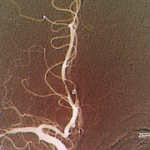
Andrei_R/shutterstock.com
WASHINGTON, D.C.—New insights into maintenance therapy for patients with vasculitides were covered by several speakers at the 2016 ACR/ARHP Annual Meeting abstract session titled, Vasculitis I: Novel Approaches to Therapy.
Expert Hubert de Boysson, MD, MSc, of the Internal Medicine Department at Caen University Hospital in France, led discussion on new therapies for patients with primary angiitis of the central nervous system (PACNS).
Researchers in France, he said, have found that maintenance therapy after induction treatment produced good results more often than no maintenance in patients with PACNS. Good outcome was defined as relapse-free survival and good functional status at their last follow-up.1
“Maintenance therapy should be prescribed once remission has been achieved,” Dr. de Boysson said.
The results of the researchers’ findings were not randomized, although there were no statistical differences seen between the maintenance and no-maintenance groups across a range of demographic and clinical factors.
A problem in PACNS is that 27% of patients with PACNS go on to relapse, and about 80% live with disabilities, so new approaches are needed, Dr. de Boysson said.
Researchers looked at 97 patients with PACNS—some retrospectively—treated since 2010 at several centers in France. Patients were a median age of 46 years old and were followed for a median of
55 months. Ninety-five patients were given glucocorticoids as induction therapy, which was combined with an immunosuppressant—mostly cyclophosphamide (CYC)—for 80 patients.
Maintenance therapy was given to 48 patients, 42 of whom had previously been treated with CYC. Maintenance was azathioprine for 38 patients, mycophenolate mofetil for four patients and methotrexate for six. The medication regimens were prescribed for a median of 24 months.
Good outcomes were seen in 32 of the 48 patients, or 67%, getting maintenance, compared to just 10 of 49 patients who did not receive maintenance, Dr. de Boysson said.
Being put on maintenance therapy was the only statistically significant predictor of a good outcome (P <0.0001) out of all the factors examined, including modified Rankin Scale (mRS) score for functionality, Dr. de Boysson said.
Patients on maintenance also needed less treatment with glucocorticoids, with lower doses that were statistically significant beginning at six months—and continuing at 12 and 18 months—after the patient’s induction therapy had begun, researchers found.
Dr. de Boysson said researchers are continuing to follow new patients in the French cohort and that international studies are underway to further study the maintenance therapy approach.
Tocilizumab in Takayasu’s Arteritis
Sharing insights on another study, researchers from Japan discussed the results of what they said was the first randomized, double-blind, controlled trial of a therapeutic agent for the treatment of Takayasu’s, a rare form of arteritis involving the aorta and its main branches and affecting women far more often than men.2 It can cause disability and can require surgery.


